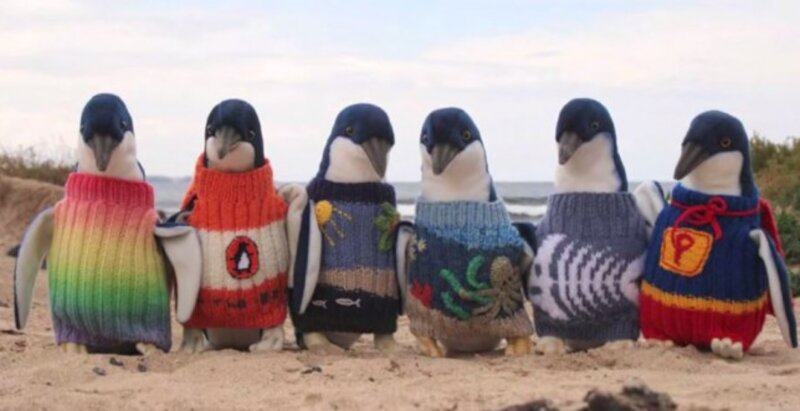“What will I need to pack? “
That is probably one of the most frequently asked questions we get from our dear clients.
You may be surprised to know that the average temperature in the Polar Regions hovers between -5 and 10 degrees Celsius . For those of you coming from Northern Europe, North America or Canada these temperatures are almost “warm” compared to your winters!
We hope this step by step guide will assist you, as packing the right clothes is one of the most important things to enjoy your trip and the activities involved.
The clue is to dress in layers!
Layer 1 – Underwear
Very simple … it consists of your regular underwear and socks. Warm socks are essential for shore and Zodiac excrusions. Your socks should be comfortable and warm. You might have heard of the two layer sock system (a thin inner sock and a thicker outer sock). We suggest you take 3 to 4 pairs of inner and outer socks.
Layer 2 – Thermals
This is your basically your thermals. This layer takes the form of “long johns” and long sleeved shirts. These items come in a range of different fabrics and the least expensive is polypropylene, a 100% synthetic material, which is up to the task. Being 100% synthetic, they can start to smell offensive after a few days wear, so bring 2-3 sets which allows time to get them laundered on board.
Skin base layers made from merino wool are exceptionally comfortable next to the skin – more so than the synthetic polypropylene fabrics. Merino wool breathes, while keeping you warm, and has a natural anti-bacterial quality – meaning that the fabric stays fresh for longer. Merino options are more expensive, however, they are usually worth the investment. A compromise is to go polypropylene for your leggings, and merino for your upper body base layer. It is a good idea to have a couple of base layer tops, and perhaps two base layer legs – to mix and match when things are being laundered.
Layer 3 – The mid layer
This is often a tricky one as on a “warm day” in the Arctic you may not feel the need for the mid layer on your legs, and will be comfortable with just the “long john” base layer. If you do feel the need for another layer on your legs, go for a polar fleece layer (basically tracksuit bottoms made of polar fleece instead of cotton, as the cotton (once wet with perspiration or water) draws the heat from your body and transfers moisture to your other layers.
Two fleece jackets, a thicker “300” weight and a medium “200” weight are recommended. On a really cold day, you could wear both jackets for additional warmth.
Layer 4 – Optional
This layer is for those who really feel the cold! This sort of layer can make you feel veryhot, especially if you are going for a walk ashore. The benefit to a down (synthetic or goose down) vest or jacket is when taking pictures or using your binoculars on the outer decks. The warmer you are outside, the more you will be able to experience.
Layer 5 – Outershell
This kit consists of a jacket and bib-pants, and a pair of rubber boots. In some of our voyages the whole kit is included for loan and in others the jacket is complimentary , the boots are available for loan but you need to bring your own pants.
You can always bring your own gear but if you do, it is absolutely essential that it is wind and waterproof, and the jacket should have a hood. If in doubt, please contact us.
Extras: Gloves, hats, beanies and sunglasses
Gloves: We strongly advise a “two -glove system” – meaning a thin inner glove, over which goes a windproof/waterproof outer glove (gauntlet). Avoid mitts – they do not allow much dexterity. Frequently you will remove your outer glove, but leave your inner glove on, as it makes the buttons and dials on your camera easier to manipulate while still providing some warmth.
Beanies and hats: A warm hat or beanie is also essential. These come in all manner of shapes and sizes. A hat or cap is also a good idea for those sunny, calm days. Many people enjoy the warmth provided around the neck by a “buff” or warm scarf. Buffs are essentially round pieces of fleecy fabric that you slip over your head to keep your neck warm.
Beanies are made out of polar fleece, wool or synthetic material. The choice is yours.
Sunglasses: The bright light in the Polar Regions, reflecting off the ice and snow, makes sunglasses essential. We have always used polarized sunglasses, as they tend to cut down on the glare significantly. We also like the “wrap around” style, as they block out light from the corner of your eyes and can stop the icy wind touching your eyes. It’s not a bad idea to have an extra pair of sunglasses on hand, just in case.
Take special care if you have prescription glasses or sunglasses. A piece of cord, known as a “lanyard”, with rubber caps to slip over the arms of your sunglasses and clip on to your jacket is not a bad idea. You can buy these at most outdoor gear shops or sailing gear outfitters.
Do not hesitate to contact us for further information and recommendations.

